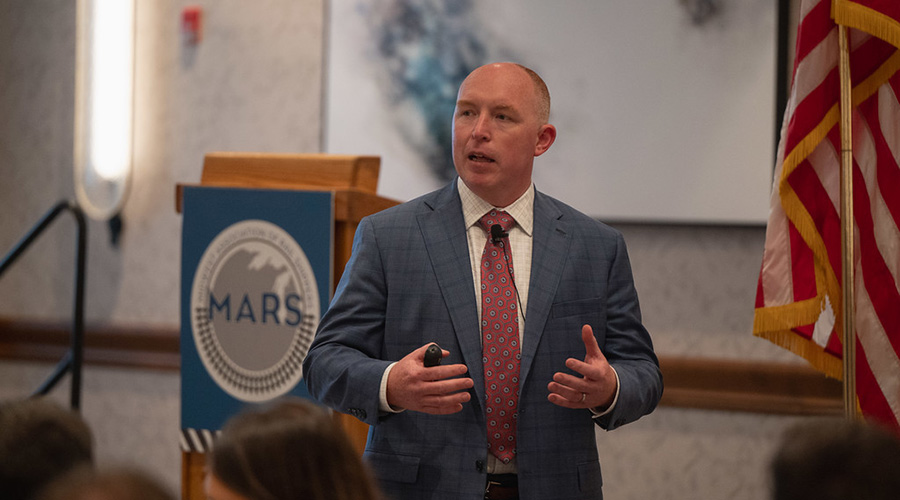Gehringer cites UP's technology goals, gains at MARS summer meeting
7/18/2024
By Jeff Stagl, Managing Editor
Emerging technology and how/why railroads are adopting it continues to be a trending topic in the rail industry. That’s why it was the subject chosen by Union Pacific Railroad Executive Vice President of Operations Eric Gehringer for his luncheon keynote address July 9 at the Midwest Association of Rail Shippers summer meeting in Lake Geneva, Wisconsin.
Gehringer titled his presentation thusly: “Rail Innovation, Connecting Shippers With Technology.” UP is embracing a lot of technologies to be safer and more efficient, better engage with customers and make it easier to conduct business with the railroad.
In addition, the Class I is innovating to help spur growth, Gehringer said. Each day, the railroad spends about $10 million on technology, infrastructure and network expansion efforts.
In terms of leveraging technology to improve the customer experience, UP offers more application programming interface (API) solutions, employs GPS devices on containers and plays a role in piloting the telematics system being developed by the RailPulse coalition, Gehringer said.
An API is a way for two or more computer programs or components to communicate with each other. UP’s new API services include a data connector for a Tableau site, a waybill creator, and invoice and route interface. The company has 86 active API customers and more than 200 customer sign-ups for API solutions, Gehringer said.
As for the location devices on containers, about 75% of the EMP/UMAX fleets — or 47,000-plus containers — now sport GPS locators.
“They provide end-to-end container visibility, including door sensors and load sensors,” said Gehringer.
 Automated tie unloading equipment that the Class I expects to begin employing in 2025 operates “like a big Pez dispenser,” said Gehringer. Midwest Association of Rail Shippers
Automated tie unloading equipment that the Class I expects to begin employing in 2025 operates “like a big Pez dispenser,” said Gehringer. Midwest Association of Rail ShippersAs a RailPulse member, UP is helping other coalition partners Bunge North America, Canadian Pacific Kansas City, GATX Corp., Genesee & Wyoming Inc., Norfolk Southern Railway, Railroad Development Corp., the Greenbrier Cos. Inc., TrinityRail and Watco develop GPS and other telematics solutions for rail cars. UP has equipped 500 cars under a RailPulse pilot.
“We are testing sensors in a live operating environment,” said Gehringer, adding that car functions under study in the pilot include load/empty and open/close.
UP also is employing a Mobile NX system to improve safety and service in terminals. The system acts as an integrated work list inventory management tool and switch aligner for the terminal classification process. A SwitchPro NX system automates rail-car routing in terminals.
Mobile NX can process work lists, lessen the walking necessary by employees and reduce manual switches. Currently, the system is in operation at 19 terminals, with four more terminals expected to adopt it through 2025.
A big advantage with Mobile NX is that it addresses cycle time, said Gehringer.
“We are the only ones with Mobile NX,” he said. “It’s our technology.”
What soon will also be in UP’s possession: automated tie unloading equipment. Testing on the equipment began in 2020 and it will be ready for service in 2025, said Gehringer.
Now, it takes about 10 days to unload 33,000 ties along a mainline using conventional unloading equipment. The automated tie unloading equipment will unload ties in bundles as the train moves, taking about five hours to complete the same work.
“It’s like a big Pez dispenser,” said Gehringer. “The first one should be coming in December.”
In the meantime, UP will continue to increase the use of automated track inspection equipment to help improve safety. Instead of relying on track inspectors, inspections can be performed by equipment designed to greatly increase inspected miles and reduce rail defects and slow orders.
“An inspector averages 6.5 miles of walking each day,” said Gehringer. “This is much more efficient.”

